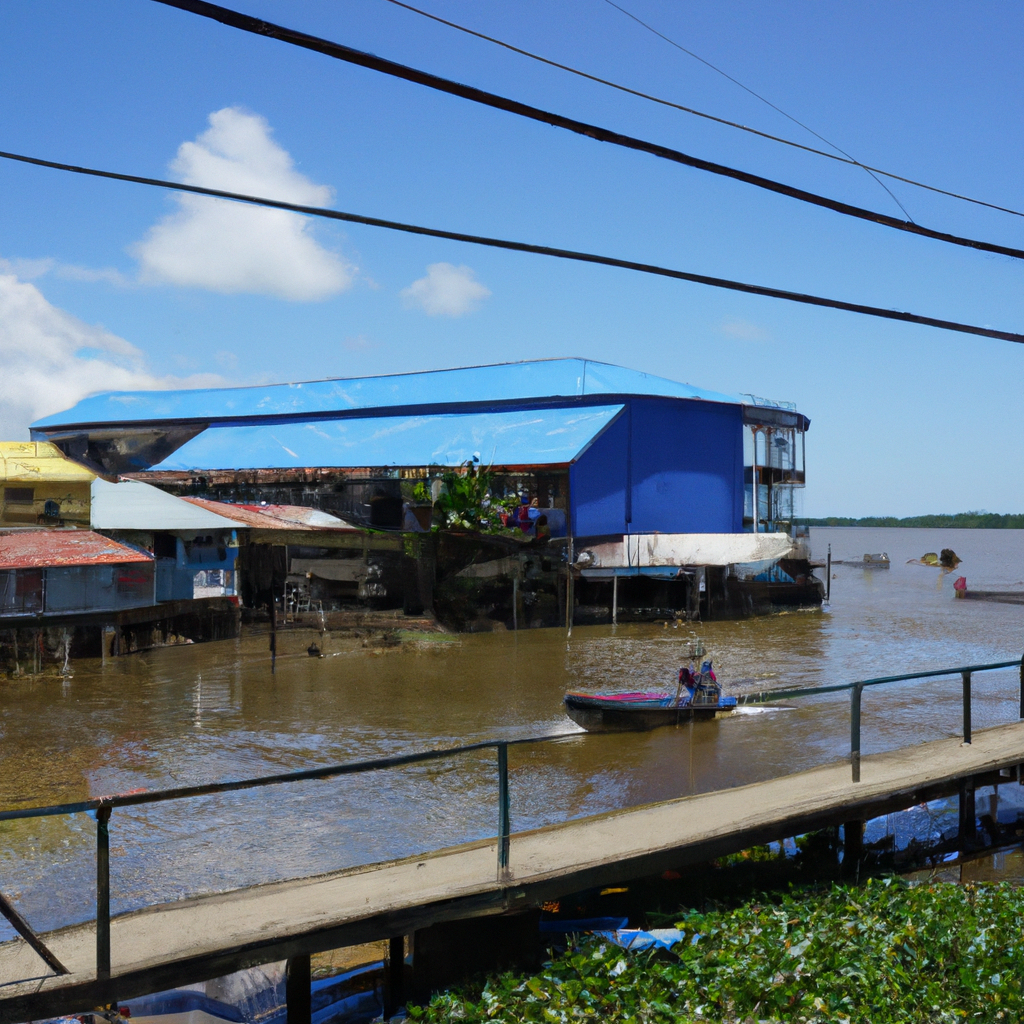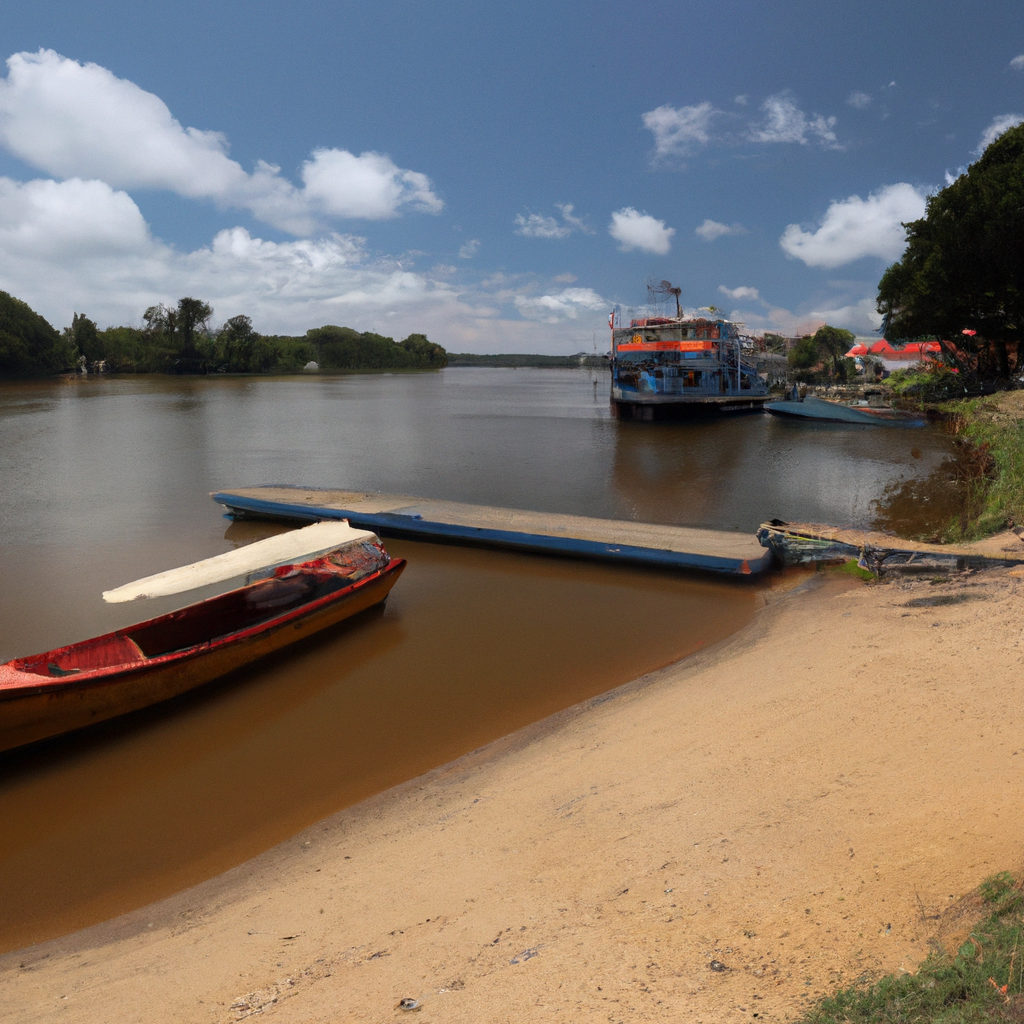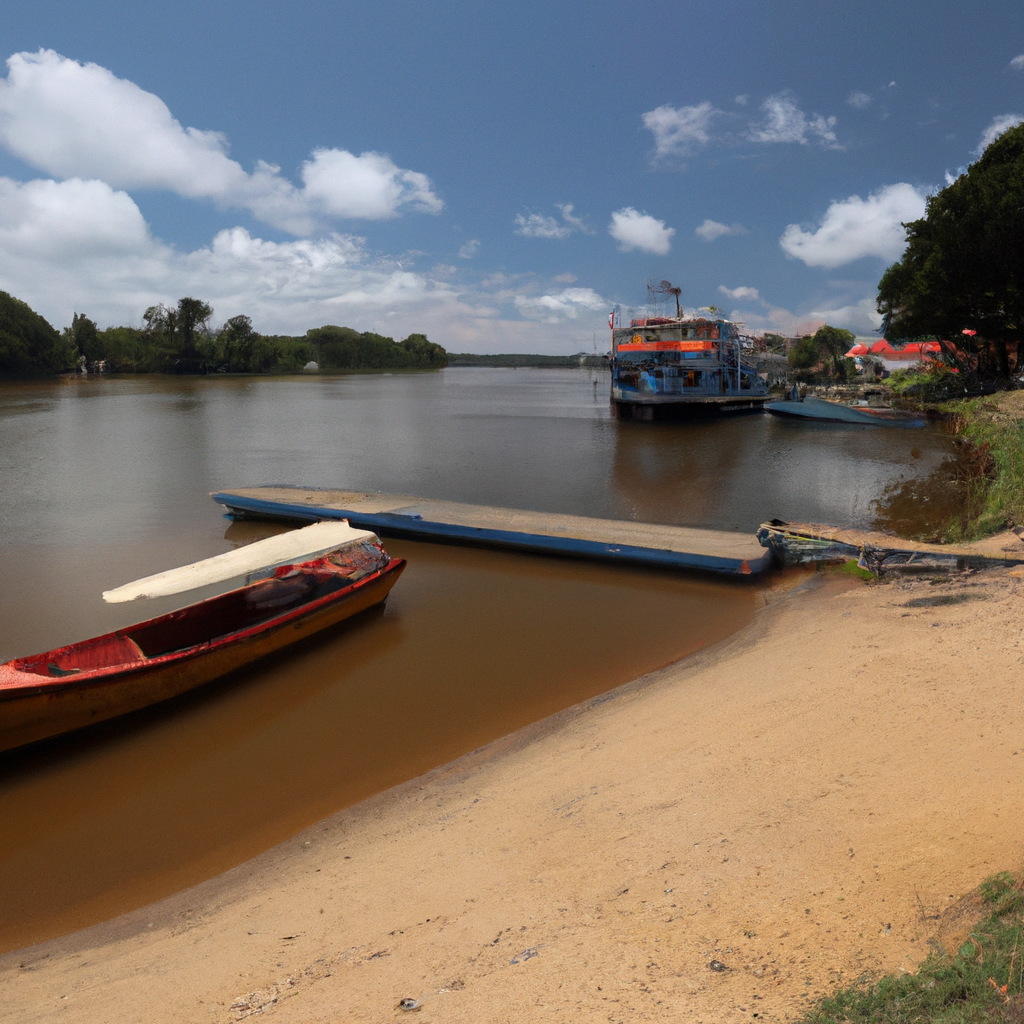Are you planning a trip to Surinam? From vibrant cities to pristine rainforests, this South American gem has a lot to offer. However, getting around in Surinam may seem daunting at first. Don’t fret! In this article, we’ll provide you with some invaluable transportation tips to help you navigate this captivating country with ease. Whether you’re exploring the bustling streets of Paramaribo or venturing into the remote interior, we’ve got you covered. So, fasten your seatbelt and get ready to embark on an unforgettable journey through Surinam’s diverse landscapes.
Getting to Surinam
If you’re planning a trip to Surinam, you have a few options when it comes to getting there. Whether you prefer to travel by air, land, or water, Surinam offers various transportation options to suit your needs.
By Air
The most common way to reach Surinam is by air. The Johan Adolf Pengel International Airport, located just outside the capital city of Paramaribo, is the main international gateway to the country. Several major airlines offer direct flights to Surinam from various cities around the world. Once you arrive at the airport, you can easily reach your destination in Surinam by taking a taxi or renting a car.
By Land
If you prefer to travel overland, Surinam is connected to its neighboring countries by road. The main land route is through Guyana, with a border crossing at Moleson Creek. From there, you can continue your journey to Paramaribo. Another option is to travel through French Guiana, with a border crossing at St. Laurent du Maroni. However, it’s important to note that some areas along these routes may require additional permits or documentation, so it’s best to check with the authorities beforehand.
By Water
For a unique and adventurous experience, you can also reach Surinam by water. Several cruises and boat tours operate in the region, offering the chance to explore the rivers and waterways of Surinam. Whether you choose to take a leisurely river cruise or a more adventurous trip on a small boat, traveling by water allows you to enjoy the scenic beauty of Surinam and its surrounding areas.
Transportation Options Within Surinam
Once you’ve arrived in Surinam, you’ll need to consider your transportation options for getting around the country. Surinam offers several modes of transportation, ranging from public transportation to taxis, car rentals, bicycles, and walking.
Public Transportation
Public transportation in Surinam primarily consists of buses, minibuses, and trams. These options are affordable and convenient for traveling within and between cities. However, it’s essential to familiarize yourself with the schedules, routes, and payment methods to ensure a smooth journey.
Taxis
Taxis are readily available in Surinam, particularly in urban areas like Paramaribo. They offer a more comfortable and private mode of transportation compared to public buses or minibuses. Taxis can be hailed from taxi stands or booked through phone apps. It’s important to negotiate the fare before starting your journey to avoid any misunderstandings.
Car Rental
If you prefer the freedom and flexibility of having your own vehicle, you can opt for car rental services in Surinam. Rental companies offer a variety of cars to suit your needs, from compact cars to SUVs. However, it’s important to have a valid driver’s license and familiarize yourself with the local driving conditions and regulations before renting a car.
Bicycles
For the eco-conscious traveler or those who enjoy a more leisurely pace, renting a bicycle is a great option. Surinam has bike-friendly areas, particularly in Paramaribo, where you can explore the city’s sights at your own pace. It’s important to follow traffic rules and wear proper safety gear while cycling.
Walking
Surinam is a relatively small country, and some areas, particularly in urban centers, are easily navigable by walking. Exploring Paramaribo on foot is a great way to soak in the atmosphere and discover hidden gems like historical buildings and local markets. However, it’s important to stay aware of your surroundings and follow pedestrian rules for your safety.

Public Transportation in Surinam
If you’re considering using public transportation in Surinam, it’s helpful to know about the different options available and how they operate within the country.
Buses
Buses are a common mode of public transportation in Surinam. They are relatively affordable and operate on set routes throughout the country. Buses are a popular choice for locals and tourists alike, providing a convenient way to navigate between cities and towns. It’s important to familiarize yourself with the bus routes and stops beforehand to ensure you board the right bus. Bus schedules and frequencies may vary, so it’s advisable to check the timings in advance.
Minibuses
Minibuses, also known as “bush taxis” or “justitiariats,” are another popular mode of transportation in Surinam. They are smaller vans that operate on fixed routes and pick up passengers along the way. Minibuses tend to fill up quickly, and they can be a more crowded option compared to buses. However, they offer a faster and more frequent service, making them convenient for shorter journeys within cities or towns.
Paramaribo Trams
In Paramaribo, the capital city, there is a unique form of public transportation known as the Paramaribo Tram. These trams are small, colorful vehicles that traverse the city’s main streets. The tram system is a tourist attraction in itself, providing a nostalgic and scenic way to explore Paramaribo. It operates on a circular route, making it easy to hop on and off at various landmarks and attractions.
Tips for Taking Buses
If you decide to use buses as your primary mode of transportation in Surinam, here are some essential tips to keep in mind:
Bus Routes and Stops
Before boarding a bus, familiarize yourself with the different bus routes and stops. You can find information about bus routes from online sources or at local bus terminals. Look for signs or ask locals for help to identify the correct bus stop for your destination.
Payment
In Surinam, bus fares are usually paid in cash directly to the bus conductor or driver. It’s advisable to carry small bills and coins to ensure you have the correct fare. If you’re unsure about the fare, you can ask the driver or conductor before getting on the bus. It’s worth noting that bus fares are generally affordable in Surinam.
Schedule and Frequency
Bus schedules and frequencies may vary depending on the time of day and the specific route. It’s a good idea to check the bus timings in advance to avoid long waits at the bus stop. Keep in mind that buses tend to be more frequent during peak hours and may have reduced services during weekends or public holidays.
Safety Considerations
When taking buses, it’s important to be mindful of your personal safety. Be aware of your surroundings and keep an eye on your belongings at all times. Avoid displaying valuables and try to sit in well-lit areas of the bus. It’s also advisable to travel during daylight hours, particularly if you’re unfamiliar with the area.

Tips for Taking Minibuses
Minibuses are a popular mode of transportation in Surinam, offering a faster and more frequent service for shorter journeys. Here are some tips to ensure a smooth ride:
Understanding the Minibus Network
Minibuses in Surinam operate on fixed routes, and each minibus has a specific destination displayed on its signboard. It’s important to familiarize yourself with the different minibus routes and their corresponding destinations. You can find information about the minibus network from online sources or by asking locals.
Fares and Payment
Minibus fares are generally paid in cash to the driver or conductor upon boarding. It’s advisable to have the correct fare ready as drivers may not provide change. If you’re unsure about the fare, you can ask the driver or conductor before getting on the minibus.
Safety Measures
Minibuses in Surinam can get crowded, particularly during peak hours. Be prepared for close quarters and try to hold onto a handrail or strap for stability. Keep an eye on your belongings and avoid displaying valuables. If you’re traveling with larger bags or luggage, it’s best to inform the driver or conductor in advance to ensure there is enough space.
Exploring Surinam by Taxi
Taxis provide a convenient and comfortable mode of transportation in Surinam, particularly within urban areas. Here are some tips for taking taxis in Surinam:
Types of Taxis
In Surinam, you’ll find both traditional taxis and shared taxis. Traditional taxis are private vehicles that can be hired for a specific journey or by the hour. Shared taxis, also known as “collective taxis” or “bus taxis,” operate on set routes and pick up multiple passengers along the way. Shared taxis are a more affordable option but may take longer due to multiple stops.
Taxi Stands
To hail a taxi in Surinam, look for designated taxi stands or ranks. These are usually located in busy areas or near popular attractions. You can also find taxis outside hotels or request one through a phone app. It’s important to ensure that the taxi you choose is licensed and has a meter or agreed-upon fare.
Negotiating Fares
When taking taxis in Surinam, it’s essential to negotiate the fare with the driver before starting your journey. While some taxis may have meters, many taxis operate on a fixed fare system. It’s helpful to have an idea of the approximate fare to your destination to ensure you’re charged a fair price. If in doubt, you can ask locals or hotel staff for advice on reasonable taxi fares.
Renting a Car in Surinam
If you prefer the freedom and flexibility of having your own vehicle, renting a car in Surinam can be a great option. Here’s what you need to know about renting a car in Surinam:
Requirements and Documentation
To rent a car in Surinam, you will typically need a valid driver’s license from your home country. It’s advisable to carry an International Driving Permit as well, although it may not always be required. Additionally, rental companies may have age restrictions, so make sure you meet the minimum age requirement to rent a car.
Driving Conditions
When driving in Surinam, it’s important to be aware of the local driving conditions and regulations. Surinam follows right-hand traffic, and road signs are generally in Dutch. Traffic can be congested in urban areas, particularly during peak hours. It’s essential to drive defensively, be cautious of pedestrians and cyclists, and adhere to speed limits and other traffic laws.
Choosing a Rental Company
Surinam has several car rental companies offering a range of vehicles to suit your needs. It’s advisable to book a rental car in advance, particularly during peak travel seasons. Compare prices, read reviews, and choose a reputable rental company with good customer service. Make sure you understand the terms and conditions of the rental agreement, including insurance coverage and any additional fees or charges.
Navigating Traffic
While Surinam’s road network is generally well-maintained, some areas may have potholes or uneven surfaces. It’s important to drive cautiously, particularly when traversing rural or remote areas. Plan your route in advance, use a reliable GPS system or a map, and familiarize yourself with the main roads and highways. Be aware that traffic rules and driving behaviors may differ from those in your home country.
Getting Around Surinam by Bicycle
For a greener and more leisurely way to explore Surinam, consider renting a bicycle. Here’s what you need to know about getting around Surinam by bicycle:
Renting a Bicycle
Bicycle rentals are available in urban areas like Paramaribo, catering to both short-term and long-term rentals. It’s advisable to rent from a reputable shop that provides well-maintained bicycles and safety equipment. Make sure you check the condition of the bicycle, including brakes and tires, before renting.
Bike-Friendly Areas
Surinam has several bike-friendly areas, particularly in Paramaribo. You can explore the city’s historic center, cycle along the waterfront, or take a leisurely ride through the residential neighborhoods. Keep in mind that traffic can be busy in certain areas, and it’s important to follow traffic rules and use designated bike lanes when available.
Safety Tips
When cycling in Surinam, always prioritize safety. Wear a properly fitting helmet, use lights and reflectors when cycling at night, and wear bright and reflective clothing. Stay alert and be cautious of other road users, including pedestrians and motor vehicles. It’s also advisable to carry a basic repair kit and know how to perform simple bike repairs.
Enjoying Surinam on Foot
Exploring Surinam on foot is a great way to immerse yourself in the local culture and discover hidden gems. Here’s how you can make the most of exploring Surinam on foot:
Exploring Paramaribo on Foot
Paramaribo, the capital city of Surinam, is known for its charming architecture and vibrant street life. Taking a leisurely stroll through the streets of Paramaribo allows you to appreciate the UNESCO World Heritage-listed historic center, with its colonial buildings and wooden houses. You can also explore bustling local markets, visit historic sites, and enjoy the city’s numerous parks and green spaces.
Hiking and Trekking
Surinam is blessed with diverse natural landscapes, including lush rainforests, savannahs, and stunning waterfalls. If you’re an adventurous traveler, you can embark on hiking or trekking trips to explore the country’s natural wonders. Tafelberg and Raleighvallen Nature Reserve are popular destinations for hiking, offering breathtaking scenery and opportunities to spot wildlife.
Navigating Surinam’s Waterways
Surinam is known for its extensive network of rivers, making water transportation a unique and scenic option. Here’s what you need to know about navigating Surinam’s waterways:
River Transportation
Several boat operators offer river transportation services in Surinam, allowing you to travel to remote areas and explore the country’s pristine waterways. River transportation can range from small traditional boats to larger vessels, depending on the route and destination. It’s advisable to book river transportation in advance, particularly during peak travel seasons.
Ferries and Boat Tours
Ferries are another option for navigating Surinam’s rivers, particularly for reaching nearby islands or traveling to neighboring countries like Guyana or French Guiana. Ferries provide a more economical and scenic mode of transportation, and the journey itself can be an experience. Additionally, boat tours are available, providing the opportunity to explore the rivers and witness Surinam’s diverse flora and fauna.
Whether you choose to travel by air, land, or water to reach Surinam or prefer to explore the country’s transportation options within its borders, there are various choices to suit your needs. By familiarizing yourself with the different modes of transportation and following these tips, you can navigate Surinam easily and enjoy the rich culture and natural beauty the country has to offer.
